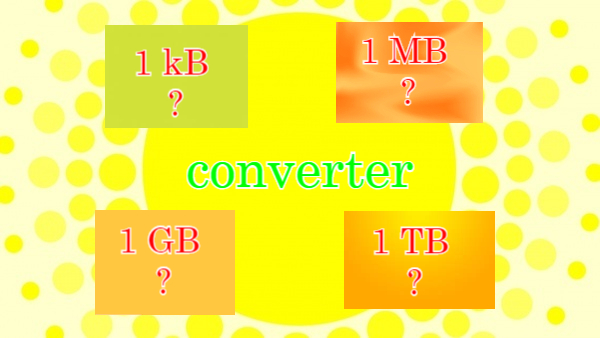

#Kb mb gb calculator archive#
Dividing both sides of the equation by 2 60 we get 2 -60 EB = 1 B. RAR is an archive file format that can compress data files similar to ZIP.

Knowing that 1 EB = 2 60 B we can now find the conversion factor for converting back. Since you can multiply anything by 1 and still retain the original value, but in different units, set it up so that EB will cancel out leaving you with B.Īnd we now have our factor for conversion from exabytes to bytes since 1 * 2 60 = 2 60. Say you want to convert from exabytes to bytes.
#Kb mb gb calculator how to#
To understand how to also convert the units follow this example. So, to convert directly from gigabytes to terabytes you multiply by 2 -10. If you store a low-quality image or video, some text, or audio in your device, its normally quantified in the measuring unit called kilobytes. Or, you can find the single factor you need by dividing the A factor by the B factor.įor example, to convert from gigabytes to terabytes you would multiply by 2 30 then divide by 2 40. 1 KB (kilobytes) 1024 bytes 1 MB (Megabytes) 1024 KB (kilobytes) It goes to Yottabyte in the same manner. To convert among any units in the left column, say from A to B, you can multiply by the factor for A to convert A into bytes then divide by the factor for B to convert out of bytes. To convert from bytes back into units in the left columnĭivide by the value in the right column or, multiply by the reciprocal, 1/x. Multiply by the value in the right column in the Bytes Reference table below. To simply convert from any unit into bytes, for example, from 5 gigabytes, just (Wikipedia provides a more complete discussion ofīinary prefixes.) In common SI decimal notation using joules as an example, 1 kilojoule = 1000 joules, 1 megajoule = 1000 kilojoules, 1 gigajoule = 1000 megajoules, etc. Here, 1 kilobyte = 1024 bytes, 1 megabyte = 1024 kilobytes, 1 gigabyte = 1024 megabytes, etc.

In this conversion calculator prefixes for bits and bytes (kilo, mega, giga and tera) are in binary notation rather than the common SI unit decimal notation. Enter the value you want to convert then click on the "Calculate" button. myRepono's charges are based on gigabytes of usage, so for example you might pay $0.20 for 1 GB of data transfer, this means you are paying $0.20 to transfer over 1 billion bytes of data (over 8 billion bits).Choose the input unit you have and the output unit you want to convert to. We then calculate the costs of the data storage and transfer based on the amount of bytes. myRepono use bytes to calculate the size of the files we are storing and transferring. Unit storage types include bits, bytes, kilobytes, megabytes, gigabytes, terabytes and more. Note, many non-alphanumeric characters such as symbols and foreign language characters use multiple bytes.Ī kilobyte (KB) is 1024 bytes, a megabyte (MB) is 1024 kilobytes and so on as these tables demonstrate. Data Storage Conversion Calculator converts unit storage types. A document containing 100 characters would use 100 bytes (800 bits) - assuming the file didn't have any overhead (additional data about the file which forms part of the file). For example, to store the letter 'R' uses 1 byte, which is stored by the computer as 8 bits, '01010010'. a letter or number such as 'A', 'B' or '7') is stored as 1 byte. On this page, you can convert data storage.

8 bits are known as a byte, and it is bytes which are used to pass our information in it's basic form - characters. Our online tools will provide quick answers to your calculation and conversion needs. Put another way, a bit is either an 'on' or an 'off' which is processed by a computer processor, we represent 'on' as '1' and 'off' as '0'. A single letter or character would use one byte of memory (8 bits), two characters would use two bytes (16 bits). FAQ > Understanding file sizes (Bytes, KB, MB, GB, TB) A byte is a sequence of 8 bits (enough to represent one alphanumeric character) processed as a single unit of information.


 0 kommentar(er)
0 kommentar(er)
